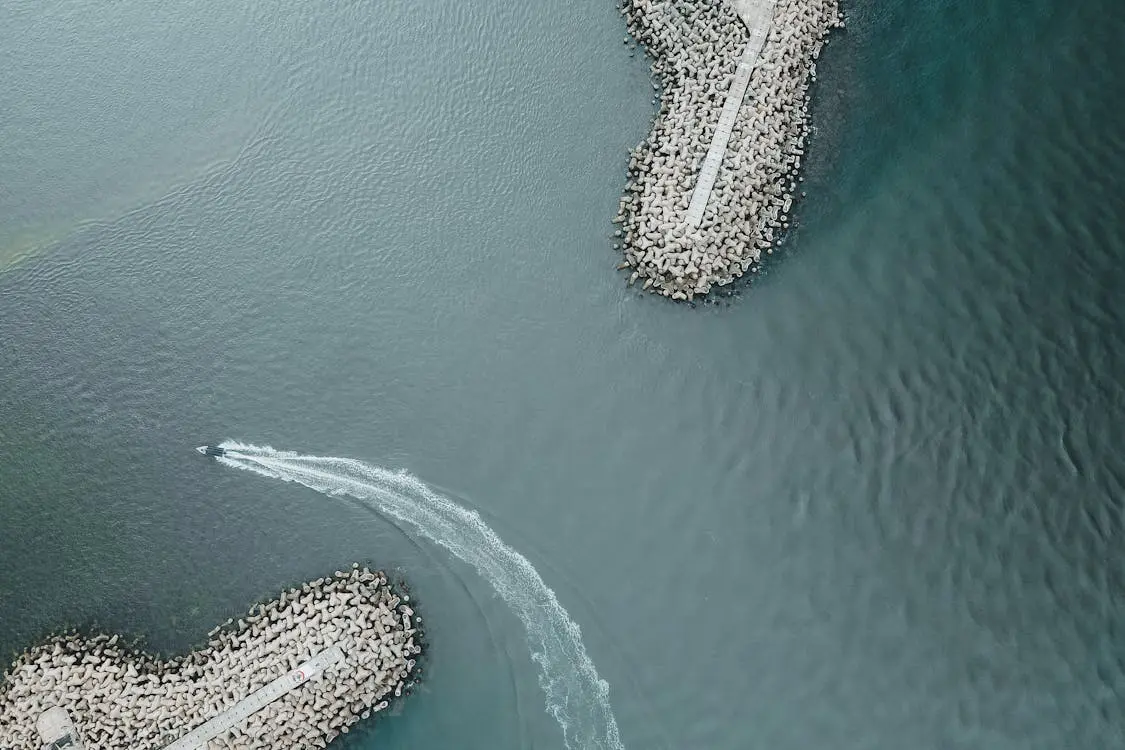Flounder: Habitats - Inlets
Table of Contents
Fishing Inlets for Flounder

Image Credit: pok-rie on Pexels
Overview of Fishing Inlets for Flounder
Inlets are dynamic transition zones where the open ocean meets protected waters, often characterized by narrow channels, shifting sandbars, and varying depths. These features create diverse microhabitats that are highly productive for flounder. Tidal currents in inlets tend to concentrate baitfish and nutrients, making these areas excellent for ambush predators like flounder.
Features Found In and Near Inlets
-
Channel Formation:
Inlets often have natural channels where tidal currents are concentrated. Flounder use these channels as feeding corridors, lying in wait on the sandy or muddy bottom. -
Sandbars and Rip Channels:
The interaction of tides and currents forms sandbars and rip channels. These structures can create pockets of calmer water adjacent to more turbulent flows, where flounder may ambush passing prey. -
Tidal Variability:
Inlet areas are subject to significant tidal changes. High tide may fill channels and expose deeper areas, while low tide can reveal shallow flats, both of which influence where flounder congregate.
Flounder Behavior in Relation to Inlets
-
Location:
Flounder are typically found lying on or just beneath the substrate in the channels and along the edges of sandbars in inlets. They position themselves in areas where the tidal flow brings in ample forage. -
Behavior:
During periods of active tidal flow, flounder tend to be more aggressive, striking rapidly at prey concentrated by the currents. When the tide is slack, they become more sedentary, relying on their camouflage to ambush slowly drifting bait.
Targeting Flounder Near Inlets
-
Live Baits and Rigs:
Effective live baits include small baitfish such as pilchards or minnows. These can be rigged on a sliding sinker rig or a fish finder rig, ensuring the bait stays near the bottom where flounder lie in wait. -
Lure Options:
Bucktails and soft plastic lures that imitate injured baitfish or shrimp are popular. -
Retrieve Techniques:
- Stop-and-Go Retrieve:
Alternate between smooth motion and deliberate pauses to simulate injured or drifting prey. This can prompt a strike from flounder that are cautiously testing the bait. - Erratic Twitching:
Incorporate sudden, sharp twitches into your retrieve to mimic the unpredictable movements of wounded prey, triggering an explosive ambush. - Variable Speed Retrieval:
Changing the speed intermittently can simulate the erratic behavior of live bait and entice flounder to strike. - Jigging: Bucktails, spoons, or soft plastics on a jig head can be jigged or bounced off the bottom to produce reaction strikes.
- Stop-and-Go Retrieve:
Community and Expert Angler Tips
-
Local Conditions:
Monitor tidal patterns and water clarity, as these factors significantly affect flounder behavior in inlets. -
Learning Through Video:
Watching detailed video tutorials can help refine your approach. Look for experts who specialize in inlet fishing for Flounder to learn advanced techniques.
Click the thumbnail above to watch a detailed guide on fishing tidal marshes for tarpon.
For more tips, check out "fishing Inlets for Flounder tips" on YouTube
Popular Search Terms Related to Inlets for Flounder
| Search Term | Thumbnail | Link |
|---|---|---|
| Inlet Flounder Techniques | Watch Video | |
| Best Live Baits for Flounder in Inlets | Watch Video | |
| Inlet Retrieve Strategies for Flounder | Watch Video | |
| Where to Find Flounder in Inlets | Watch Video | |
| Flounder Fishing Tips in Inlet Environments | Watch Video |
Ask AI for More Info
Try our AI assistant for free—sign up to access this powerful feature.
👉 Sign Up to Ask AI